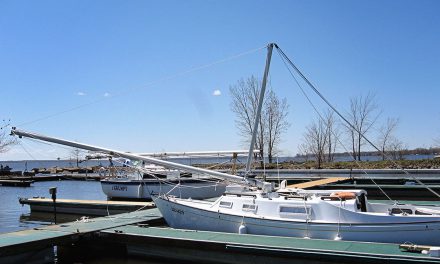
Tony Crowley has provided boaters with a enjoyable book that contains instructions for building a variety of useful navigation tools. It combines these with reminiscences, rules of thumb, and even a recipe for Spanish Armada omelet. Some of the navigation tools would make great projects when working with student mariners.
Tony has spent a great deal of time at sea, both as a former British merchant navy officer, and later as a sailor. This book shows that he clearly enjoyed the art of navigation and found satisfaction in revisiting and improving historical navigation tools and techniques. The largest portion of this book deals with astral navigation.
Topics range from a “sun compass” — a handy technique for using the early morning sun to find true east or the late-day sun for finding west — to a lengthy chapter entitled “Sun Navigation in a Nutshell.” This chapter starts with the basics of sextant sun sights and includes a poem to help guide the student through the steps of sight reduction. It then continues with construction projects for a mariner’s quadrant, a cross-staff, an improved back-staff, and an octant.
The final part of the sun navigation section is entitled “Dire Straits Navigation.” It features a clever way to construct a quadrant using only a sheet of paper, a small board, and a few pins. Then the author gives some rules of thumb to help calculate the sun’s declination and the time at which the sun will cross the Greenwich Meridian. He again uses a poem as a memory aid and attributes David Burch’s classic book, Emergency Navigation, as his inspiration.
Use of some of the navigation tool projects, such as quadrants and the cross-staff, require sighting directly toward the sun. And these instruments traditionally do not incorporate sun shades. Cautions about taking sufficient measures to protect your eyesight are a bit understated. Please take particular care, especially if working with young mariners.
Sailors who cruise in waters with significant tidal currents will especially enjoy the chapter called “The Magic of 6°,” which gives an easy rule of thumb for computing the course correction required to compensate for currents. Tony also includes a very nice discussion about how to visually detect currents that he calls “Reading the Sea.”
This is an appealing book that includes an eclectic range of topics. Some are interesting variations on known themes, others are included to amuse, and some provide unexpected insight into the art of navigation (such as using the motion of Kochab around Polaris to find longitude).
The Lo-Tech Navigator By Tony Crowley (Sheridan House, 2004; 148 pages)




